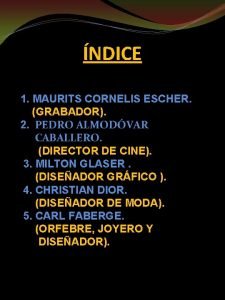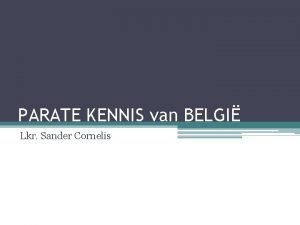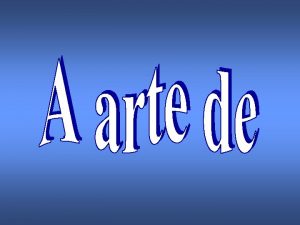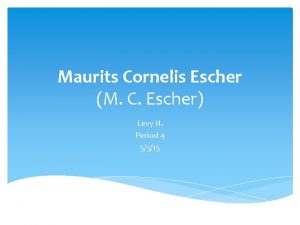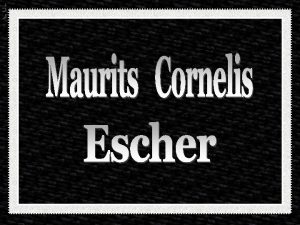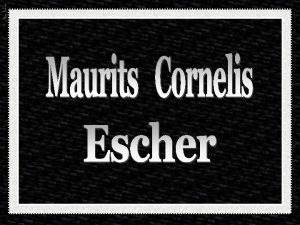Life Works and Style Maurits Cornelis Escher 17





- Slides: 5

• • Life Works and Style

Maurits Cornelis Escher ( 17 June 1898 – 27 March 1972), usually referred to as M. C. Escher, was a Dutch graphic artist. Maurits Cornelis, nicknamed “Mauk”, was born in Netherlands, in a house that forms part of the Princessehof Ceramics Museum today. He was the youngest son of civil engineer George Arnold Escher and his second wife, Sara Gleichman. In 1903, the family moved to Arnhem, where he attended primary schooland secondary school until 1918. He was a sickly child, and was placed in a special school at the age of seven and failed the second grade. Though he excelled at drawing, his grades were generally poor. He briefly studied architecture, but he failed a number of subjects and switched to decorative arts. Here he studied under Samuel Jessurun de Mesquita, with whom he would remain friends for years. In 1922 Escher left the school, having gained experience in drawing and making woodcuts.

Escher's works crossed the line with visual art and science with a continuity that makes the author's style, a "signature" for all purposes. Some drawings of Escher , are an intricate geometric morphology through allegorical works and sometimes disturbing. The attraction of Escher for polyhedra is simplified by the Stars woodcuts, executed in 1948 in the style of Leonardo.

As the tessellation, also owned by the Moebius Strip fascinated Escher. The Moebius Strip II highlights of 1963, with the progress of the ants, the existence of a unique face continues. The lithograph Belvedere building in 1958 underlines the paradoxes perettivi obtained with cubic ambiguous as the Necker cube, where you can not figure out which side is front and which behind.

Drawing Hands Affine, but in a sense opposite to the waterfall is the perpetual motion represented by this lithography Right Up and down run in 1960. And 'an Anamorphosis, ie misrepresentation of perspective. The so-called Rubin's vase is an example of a reversible figure devised by the Danish psychologist Edgar Rubin in 1915 to emphasize the relationship between figure and background.
